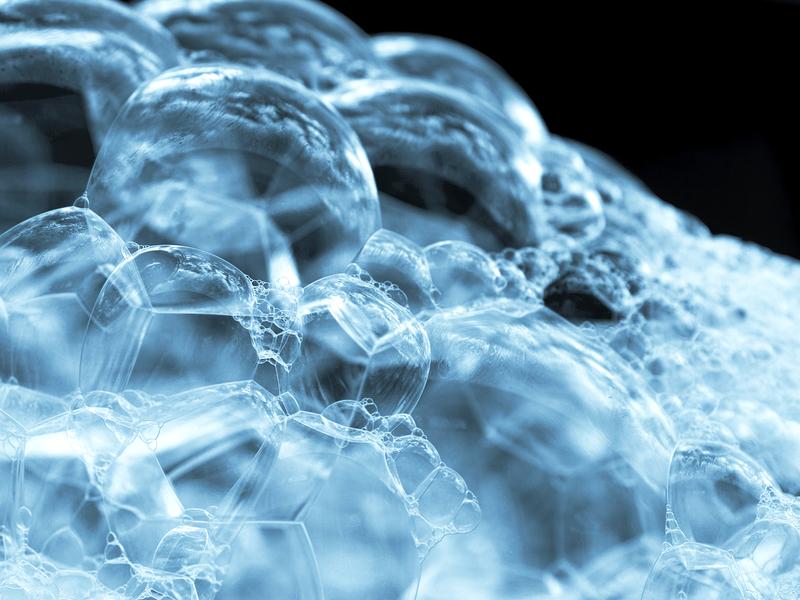Your Soap Has Bacteria In It, But It Still Gets You Clean

Bacteria are everywhere on your skin, hair and eyelashes, to name a few of their homes. Bacteria are even in your soap, the very thing you thought washed all the bacteria away.
As long as the bacteria keep their numbers small, there's nothing wrong with them living in soap. But every once in a while it's a problem, like last week when Gilchrist & Soames recalled seven products, including shampoos and shower gels, because of possible contamination with the bacteria Psuedomonas aeruginosa and Enterobacter gergoviae.
This isn't the first time the very tools we use to fight bacteria have succumbed to an invasion. In 2009, the FDA even recalled one brand of hand sanitizer because it was likely to contain bacteria.
"Everyone assumes that soap is clean," says Jim Arbogast, a vice president of hygiene sciences and public health advancements at GOJO Industries, a company in Akron, Ohio, that makes Purell hand sanitizer and other products. "Any cosmetic product in the U.S. in a public setting or a home setting, it's going to have some normal bacteria that's not going to cause any illness."
When you wash your hands you're not trying to rid them of all bacteria, explains John Heinze, a former senior research microbiologist for the Dial Corp. who now works for KellenAdams, a Washington, D.C., public affairs firm. Bacteria grow everywhere, Heinze says, even in alcohol. "It broke my heart," he says. "Ruined a bottle of bourbon."
While at Dial, Heinze authored a study showing that even though bar soap contains bacteria, it still cleans hands effectively. "You're just trying to reduce the number of bacteria [on your hands] to give your immune system a fighting chance," Heinze tells Shots.
So knowing that no soap is free of bacteria, how does a soap-maker proceed?
"You need to make sure that microbes won't take advantage of the situation and proliferate," says Dave Shumaker, a microbiologist at GOJO Industries. To that end, most products have antimicrobial agents built into the recipe, even if they aren't labeled as antibacterial. Soap- and shampoo-makers call these agents the soap's preservation system. Without a preservation system, bacteria would munch on the surfactants and lipids.
Soap and shampoo companies employ someone like Shumaker to make sure that the preservation system works and that an unopened product will last three years on the shelf. To test that system, he might use bioluminescence to detect any metabolic products — signs that some sort of organism is converting nutrients into energy. Or he might dilute the sample and culture it on a petri dish to count how many bacteria colonies form.
The FDA has set upper limits for bacteria in cosmetics and hygiene products. A product used around the eyes must contain fewer than 500 colony-forming units per milliliter, a standard measure of how many bacterial cells are living in a substance. A product for use elsewhere on the body must contain fewer than 1,000 colony-forming units per milliliter.
Another common test involves adding bacteria to products to see how the preservation system fights back. After all, there are lots of bacteria in the home that could contaminate a product at any time, especially in the bathroom. But as long as the antimicrobial agents are working, bacteria in the soap shouldn't increase in number.
Occasionally a company will find more serious bacteria in its products, such as Staph and Pseudomonas species that cause skin infections, or the bacteria that cause strep throat. The FDA doesn't allow any trace of these bacteria in hygiene products. Pseudomonas was one of the bugs that prompted the Gilchrist & Soames recall.
Because manufacturers have to meet the FDA guidelines, people rarely contract infections from the bacteria in soap, dermatologists say. "I have yet to see a skin infection caused by a product itself," says Dr. Whitney Bowe, a dermatologist in New York City. "It's really unusual to see infections from soap and shampoo."
When she does see a Pseudomonas infection, Whitney and her patient usually trace it to a nail salon, where there are lots of people sharing damp environments in which bacteria can thrive. Adding nail extensions or acrylic nails opens the body to infection, according to Dr. Zoe Draelos, a dermatologist in High Point, N.C., who performs research for the cosmetics industry. That's because they move the cuticle or separate the nail from the nail bed.
Unopened products should remain relatively germ-free for about three years. But once they're open, Draelos says, they need to be used within one year.
And if a product separates into liquid and lipid components, Draelos says, it's time to toss it, because it can no longer fight off contamination.
9(MDEwODYxNTQyMDEzNjAxODk2Nzc2NzNmYQ001))